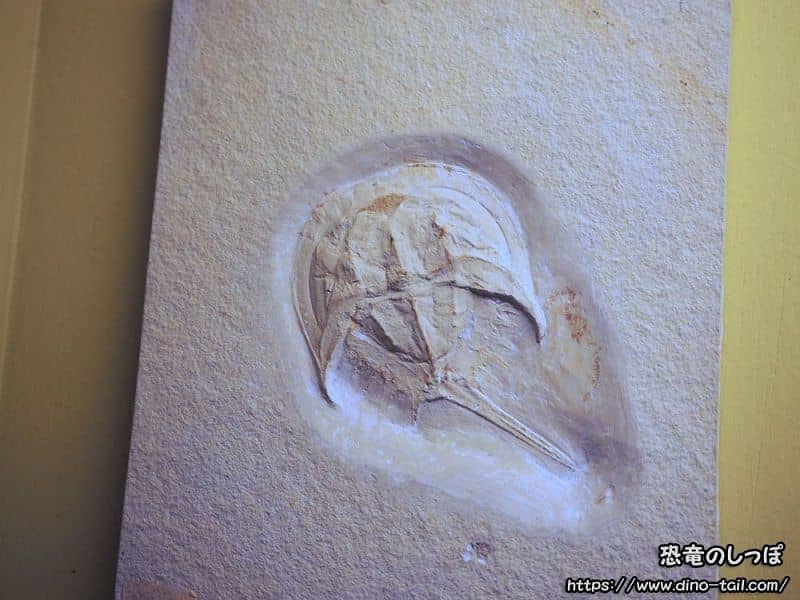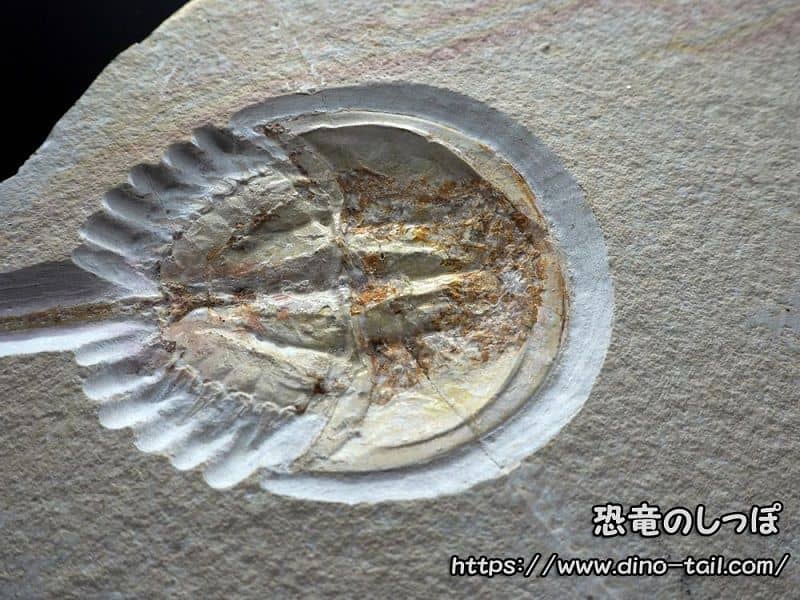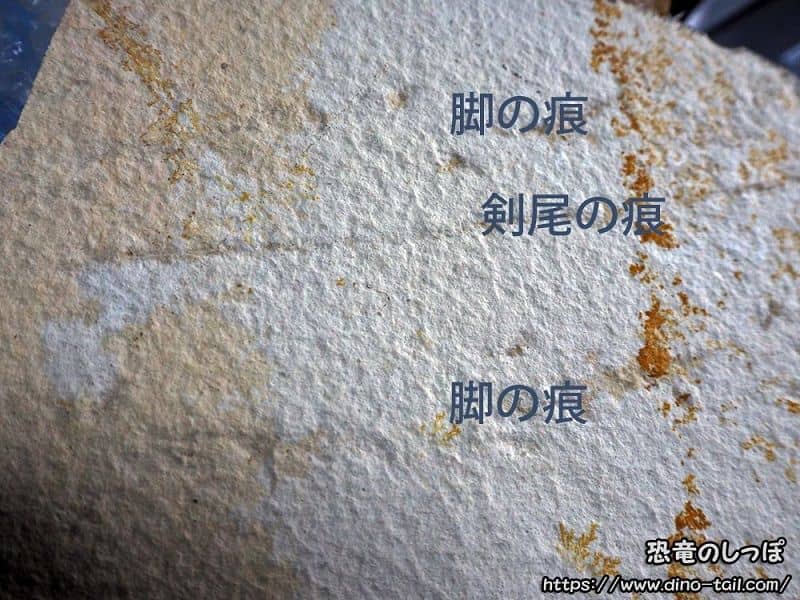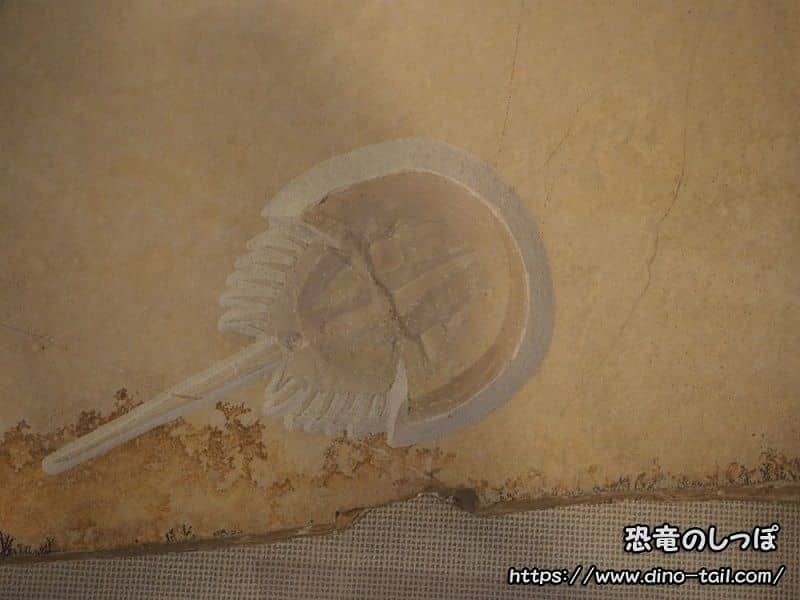About Mesolimulus (Horseshoe Crab)
| Scientific Name (Genus) | Mesolimulus |
| Meaning of Name |
Intermediate horseshoe crab
meso (intermediate) [Greek] + Limulus (scientific name of the horseshoe crab genus) |
| Classification | Chelicerata, Merostomata, Xiphosura, Limulidae |
| Period | Late Jurassic (approx. 150.8 million - 145.5 million years ago) |
| Sub-classification / Species Name | Mesolimulus walchi |
| Year of Paper Publication | 1822 |
Features: The Perfected Design of a "Living Fossil"
Mesolimulus is a relative of the horseshoe crab that lived in the shallow seas of the Late Jurassic. Its body had a "perfected design" that has remained almost unchanged for hundreds of millions of years to the present day.
Anatomy and Ecology
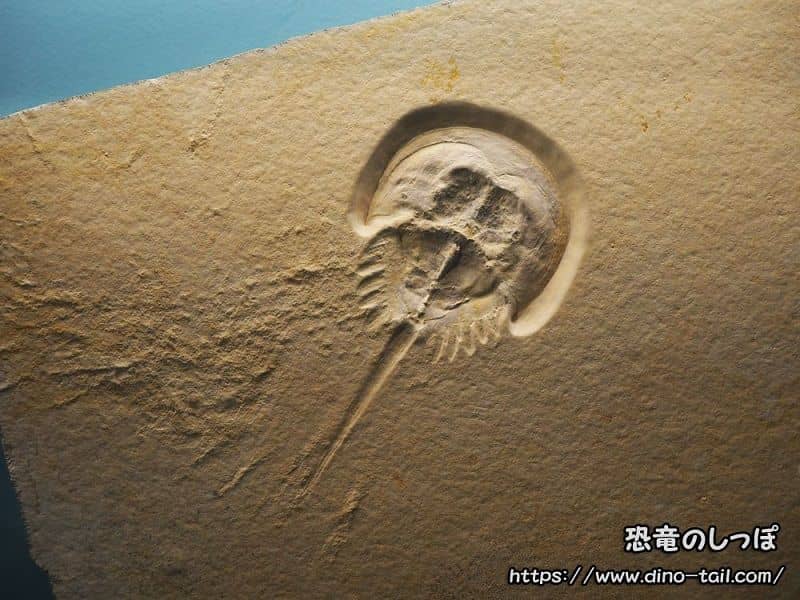
Solnhofen Museum - Bürgermeister-Müller-Museum, Germany.
Despite its name, it is not a crab (crustacean), but belongs to the "Chelicerata" subphylum, which is more closely related to spiders and scorpions. They were benthic (bottom-dwelling) creatures that walked on the seabed and preyed on small organisms like worms.
The front part of its body is a round shield, the rear part is almost trapezoidal, and the tail is a long, pointed telson.
- Book gills: On its underside, it had unique gills (book gills) made of overlapping folds like the "pages of a book" for breathing in the water.
- Telson: The long, sharp tail was not a weapon, but an important tool for righting itself using leverage if it was flipped over.
They are called "living fossils" because they had already perfected this very efficient body design, adaptable to various environments, by the Jurassic period.
Solnhofen's "Death Trap" and the Death March
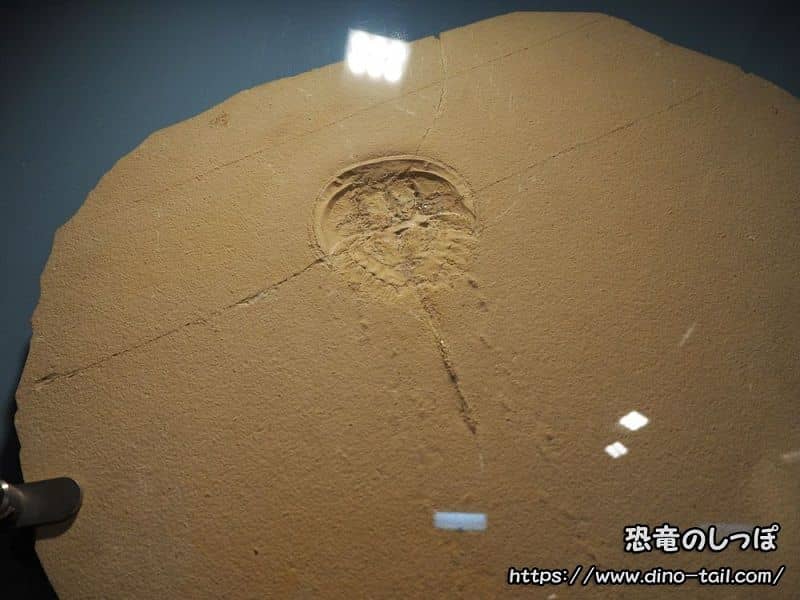
Solnhofen Museum - Bürgermeister-Müller-Museum, Germany.
The Solnhofen limestone in Germany is a famous fossil site known for the amazing preservation of not only creatures like Archaeopteryx, but also soft tissues and traces of activity. Many Mesolimulus fossils have been discovered here, and particularly famous is the "death march" fossil ( Mortichnia : death trace ), which preserves the body and its final tracks together.
In the Late Jurassic, Solnhofen was a lagoon separated from the open sea, with very high salinity and an anoxic bottom. It was a "sea of death" where few creatures could normally live.
It is likely that Mesolimulus living in the open sea were washed into this toxic lagoon by a storm or other event. They would have crawled on the seabed with their last bit of strength, trying to escape to a place with oxygen, but eventually succumbed. Because of the anoxic environment, their carcasses were not decomposed and were preserved as fossils in perfect condition, along with their final, tragic tracks.
Mesolimulus Stamp and Fossil Gallery
